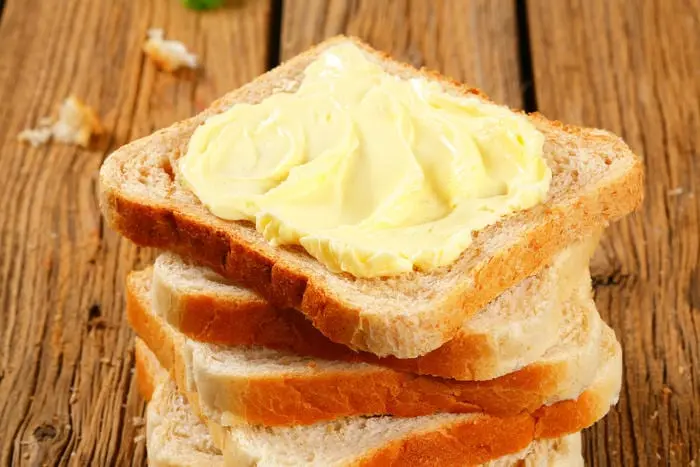Often when choosing ingredients for baking or everyday use, we are lost. We are threatened with the harms of margarine, spread, or butter products, although in reality, not everything carries a potential threat. What to choose: butter, margarine, and whether they can actually be eaten?
Butter

Butter is made of heavy whipping cream; it contains not less than 72.5% (some 80% or 82.5%) fat. More than half of these fats are saturated fatty acids.
Saturated fats are considered harmful to the heart and blood vessels. They increase the number of “bad” cholesterol or low-density lipoprotein, coalesce and clog blood vessels.
But lipoproteins won’t clump if not to gain negative factors such as free radicals from the environment. If you eat a small number of antioxidants – fruits and berries and have a bad habit, bad cholesterol will accumulate.
Otherwise, the butter does not harm the body, but on the contrary, it improves immunity and protects against infections.
Butter can be used for the heat treatment of products. There are only 3% of fatty acids, which, when heated, are converted into carcinogens. However, it is better to use melted butter for frying because butter contains milk protein, which starts to burn at high temperatures.
Margarine

Margarine contains 70-80% fats that are unsaturated fatty acids. It is proved that the replacement of saturated fatty acids with unsaturated reduces the risk of developing cardiovascular diseases.
Therefore, if a person has atherosclerosis factors, including Smoking, excess weight, stress, heredity, and hormonal disorders, it is necessary to give preference to margarine.
Margarine is still considered harmful because of TRANS fatty acids formed in the hydrogenation process of vegetable oils. 2-3% of TRANS fatty acids are present in butter, the risk of diseases of the heart and blood vessels increases TRANS fats of industrial origin. Due to Standards, the number of TRANS fats in margarine should not exceed 2%.
Do not put the margarine under heat treatment. Margarine contains from 10.8 to 42.9% of polyunsaturated fatty acids. When heated to 180 degrees, margarine emit hazardous aldehydes.
Spread

The spreads are products with a mass fraction of fat not less than 39%, including animal and vegetable fats.
There are several types of spread:
- creamy vegetable (58.9% of saturated fatty acids and 36.6% unsaturated);
- butter (54,2% saturated and 44.3% unsaturated);
- vegetable fat (36,3% saturated and 63.1% of unsaturated).
In butter and vegetable fat spreads, there is less saturated fat than in butter but more than in margarine. Regarding TRANS fatty acids, the number of them in feeds should not exceed 2%.
It is better not to use a spread for frying and baking: it contains about 11% polyunsaturated fatty acids, which, when heated, emit carcinogens.









